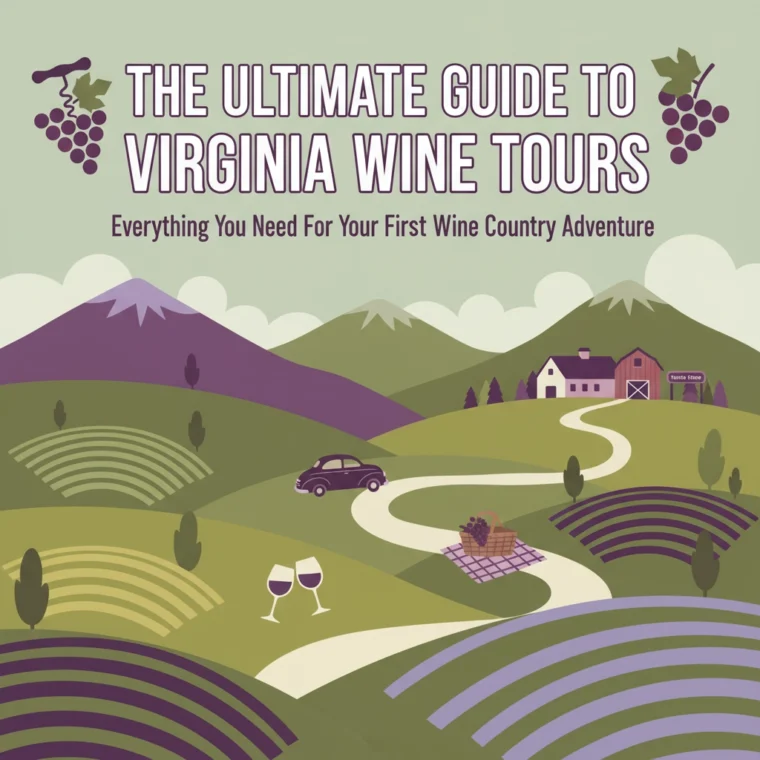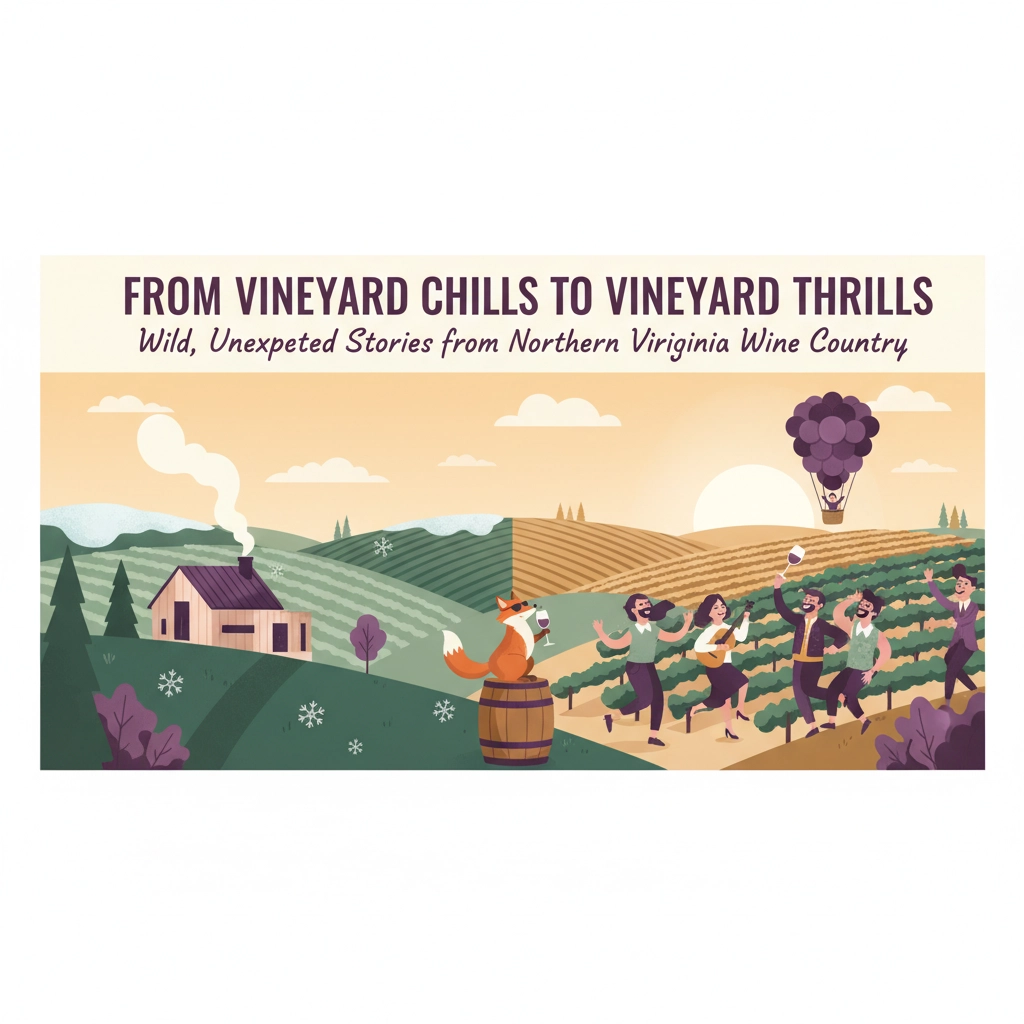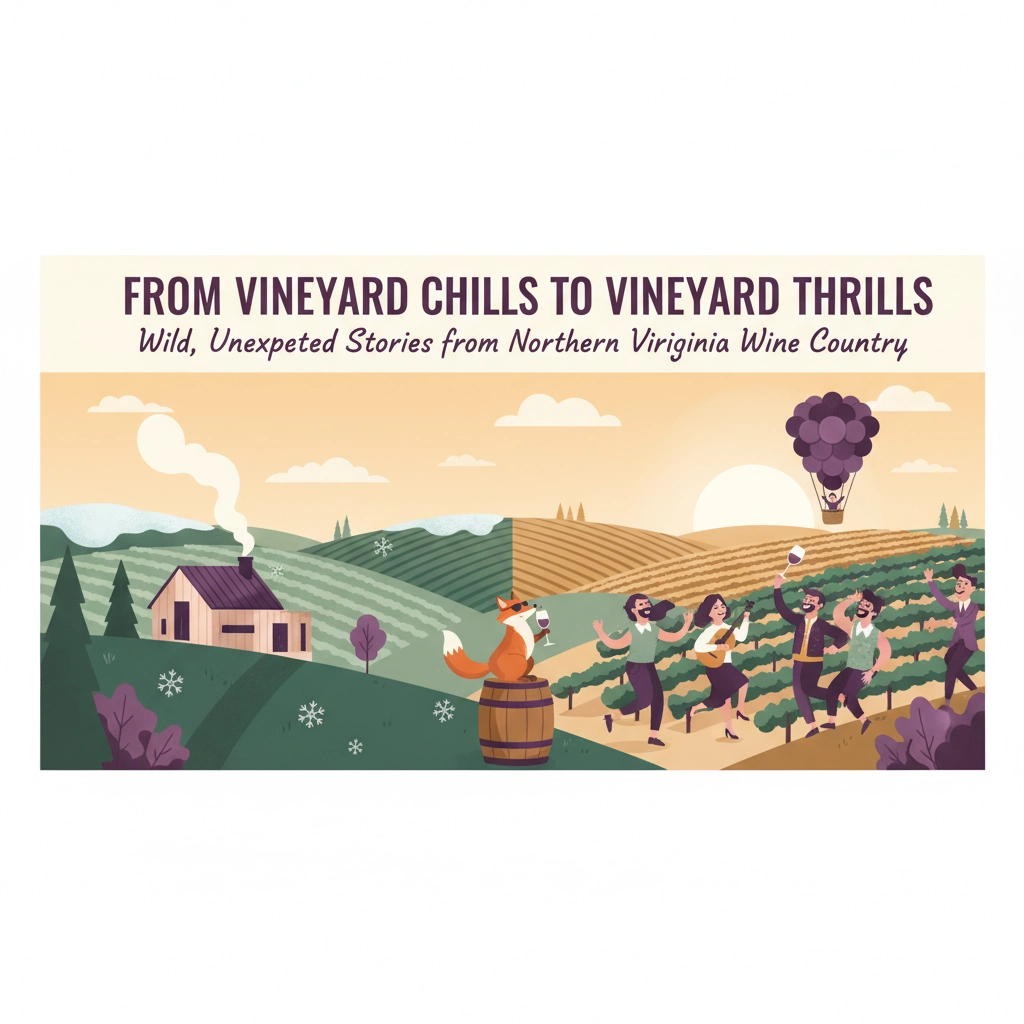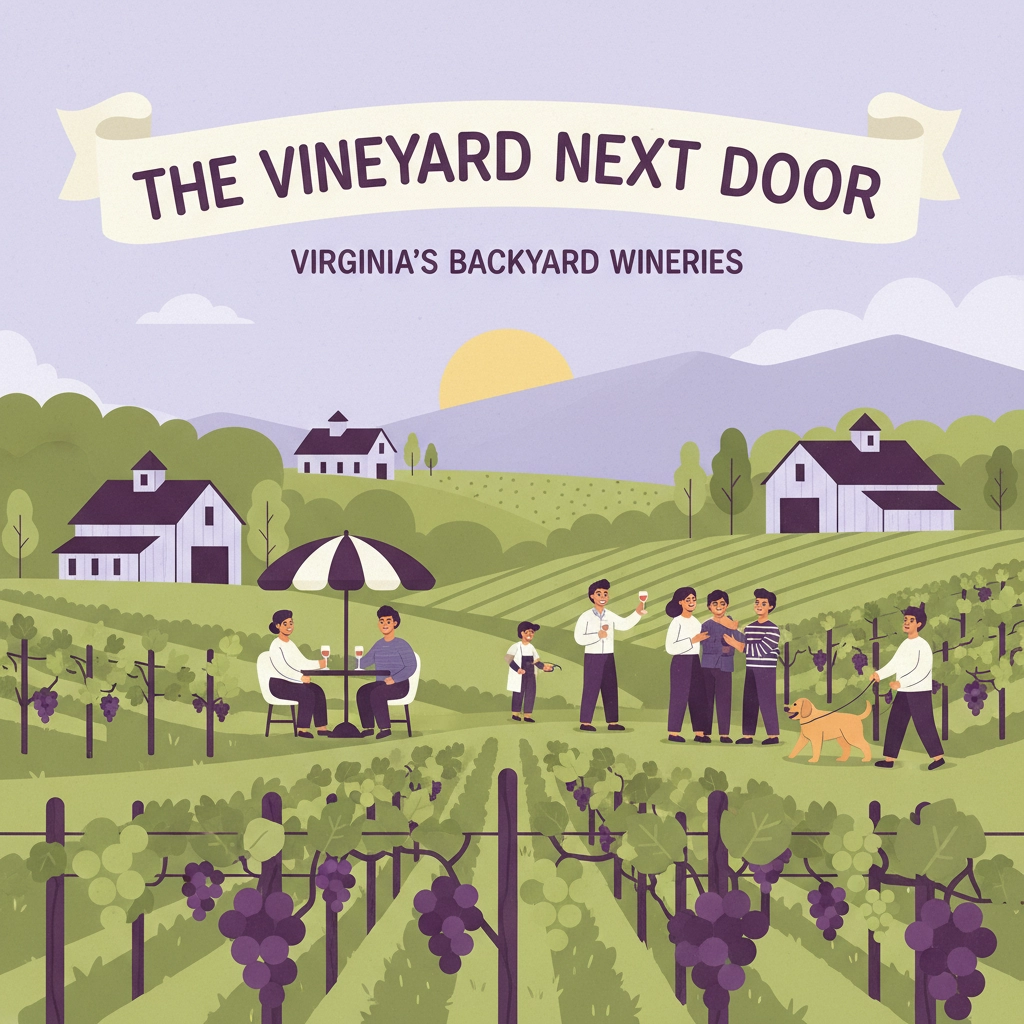Planning your first Virginia wine tour adventure? You're in for a treat! Virginia's wine country has quietly become one of America's most exciting wine destinations, with over 300 wineries spread across rolling hills, mountain slopes, and picturesque valleys. Unlike the crowded tourist scenes you might find elsewhere, Virginia offers an intimate, authentic wine experience that feels both sophisticated and refreshingly down-to-earth.
Whether you're a wine newbie or someone who knows their way around a tasting room, Virginia's diverse wine regions offer something special for everyone. From the convenient Northern Virginia locations just an hour from Washington DC to the scenic mountain vineyards, you'll discover award-winning wines, passionate winemakers, and some of the most beautiful countryside on the East Coast.
Why Virginia Wine Country Should Be Your Next Adventure
Virginia's wine industry might surprise you with its quality and innovation. The state boasts 10 distinct wine regions and 8 American Viticultural Areas (AVAs), each with unique soil conditions and microclimates that create distinctly different wines. What makes Virginia special isn't just the variety – it's the boutique nature of the wineries and the collaborative spirit among winemakers.
Many Virginia vintners participate in scientific exchanges, constantly experimenting with different grape varieties and winemaking techniques. This means you'll often taste unique wines you won't find anywhere else, and you might even meet the actual winemaker who created them. That personal connection transforms a simple tasting into a genuine conversation about passion, craft, and the land itself.
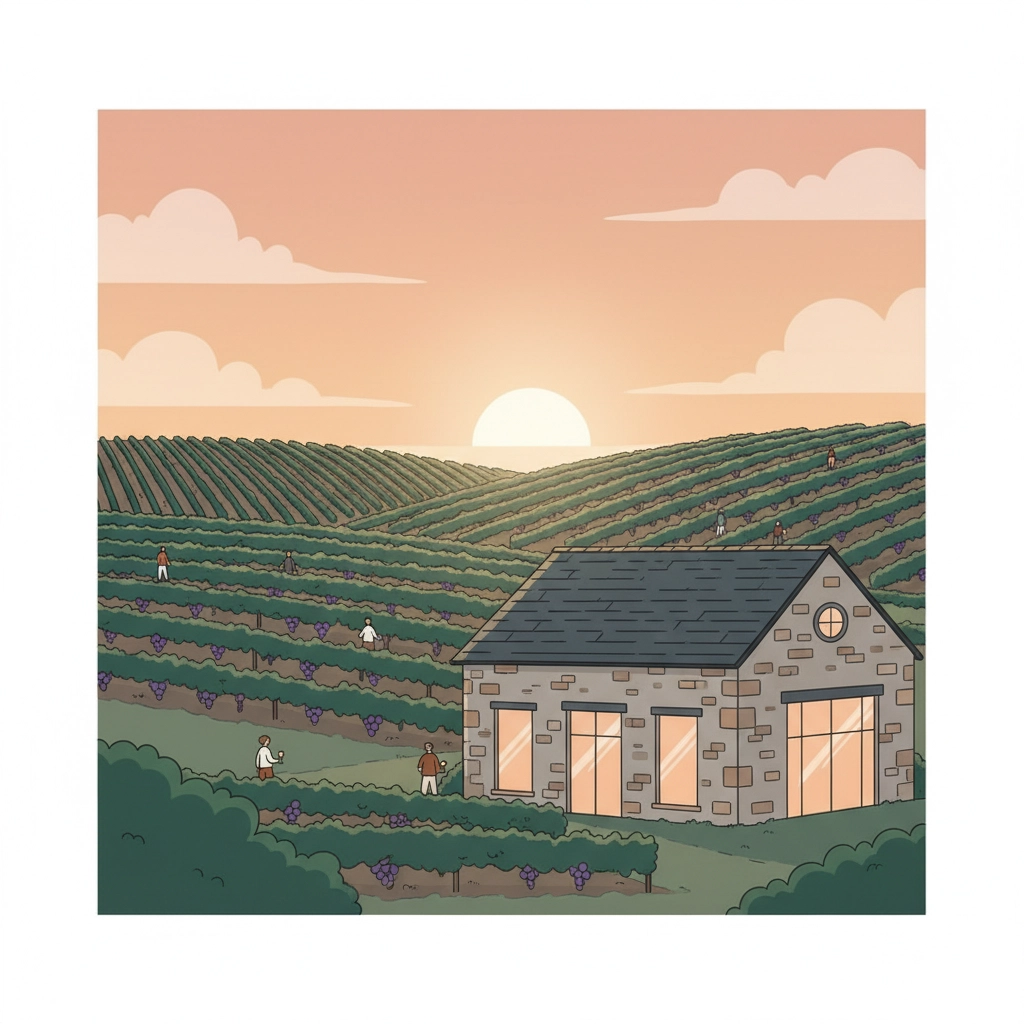
Understanding Virginia's Wine Regions
Northern Virginia is your gateway to wine country and the most accessible region for first-timers. Loudoun and Fauquier counties, often called "DC's Wine Country," sit just 45-60 minutes from the nation's capital. This region combines convenience with quality – you can easily visit multiple award-winning wineries in a single day without long drives between stops.
The Shenandoah Valley offers a more mountainous wine experience, with vineyards perched on hillsides overlooking the famous valley. The Monticello AVA around Charlottesville provides both history and great wine, as Thomas Jefferson's estate sits right in the heart of this region.
Each region reflects different terroir characteristics. Northern Virginia's rolling hills and varied soil types support everything from crisp Sauvignon Blanc to bold Cabernet Franc, while mountain regions excel with aromatic whites and elegant reds that benefit from the elevation and temperature swings.
Types of Wine Tours to Consider
Guided Group Tours take the stress out of planning and driving. These typically last 5-6 hours and visit 2-3 family-owned wineries with a certified wine expert or sommelier as your guide. You'll get insider knowledge about each winery's story, learn about the winemaking process, and enjoy behind-the-scenes access you might not get on your own.
Private Tours work perfectly for celebrations, corporate events, or when you want a completely customized experience. With private group tours, you can choose specific wineries, adjust the timeline, and focus on particular wine styles that interest your group most.
Self-Guided Adventures give you complete freedom to explore at your own pace. Virginia's wine regions are well-marked with signage, and many wineries cluster together for easy hopping. Just remember to designate a driver or use ride-sharing services – Virginia takes impaired driving seriously.

What to Expect During Your Winery Visits
Vineyard Tours are where the magic starts. Guides walk you through different vineyard "blocks," explaining which grape varieties grow where and why. You'll learn how soil composition, slope, and sun exposure affect the grapes, and how these factors ultimately influence the wine's flavor profile. Some wineries even offer unique experiences like horseback exploration of their grounds.
Cellar and Production Tours show winemaking in action. You'll see aging wines in oak barrels for reds or stainless steel tanks for whites. Many tasting rooms offer views into working production areas, and some feature museum-style exhibits about Virginia's winemaking history and each property's specific story.
Tasting Room Experiences range from cozy farmhouse settings to elegant facilities with panoramic mountain views. Some wineries like Breaux Vineyards offer internationally acclaimed wines with Blue Ridge Mountain backdrops, while smaller operations provide intimate conversations with the actual winemakers.
The tastings themselves typically include 4-6 wines, starting with lighter whites and progressing to heavier reds. Guides explain each wine's characteristics, suggest food pairings, and often share stories about harvest conditions or special winemaking techniques used.
Planning Your Perfect Virginia Wine Tour
Timing Matters – Virginia wine country is beautiful year-round, but each season offers different experiences. Spring brings blooming vines and fresh releases, summer provides warm weather perfect for outdoor tastings, fall offers harvest season excitement and gorgeous foliage, while winter creates cozy tasting room atmospheres and special holiday events.
Route Planning is crucial for maximizing your experience. Northern Virginia's wine regions cluster conveniently together, making it possible to visit multiple wineries without excessive driving. The Loudoun wine country area alone offers dozens of options within a small geographic area.
Consider your group's preferences when selecting wineries. Some focus on specific varietals, others emphasize food pairings, and many offer special experiences like blending seminars or vineyard picnics. Research ahead or work with a tour company that can match your interests to the right locations.
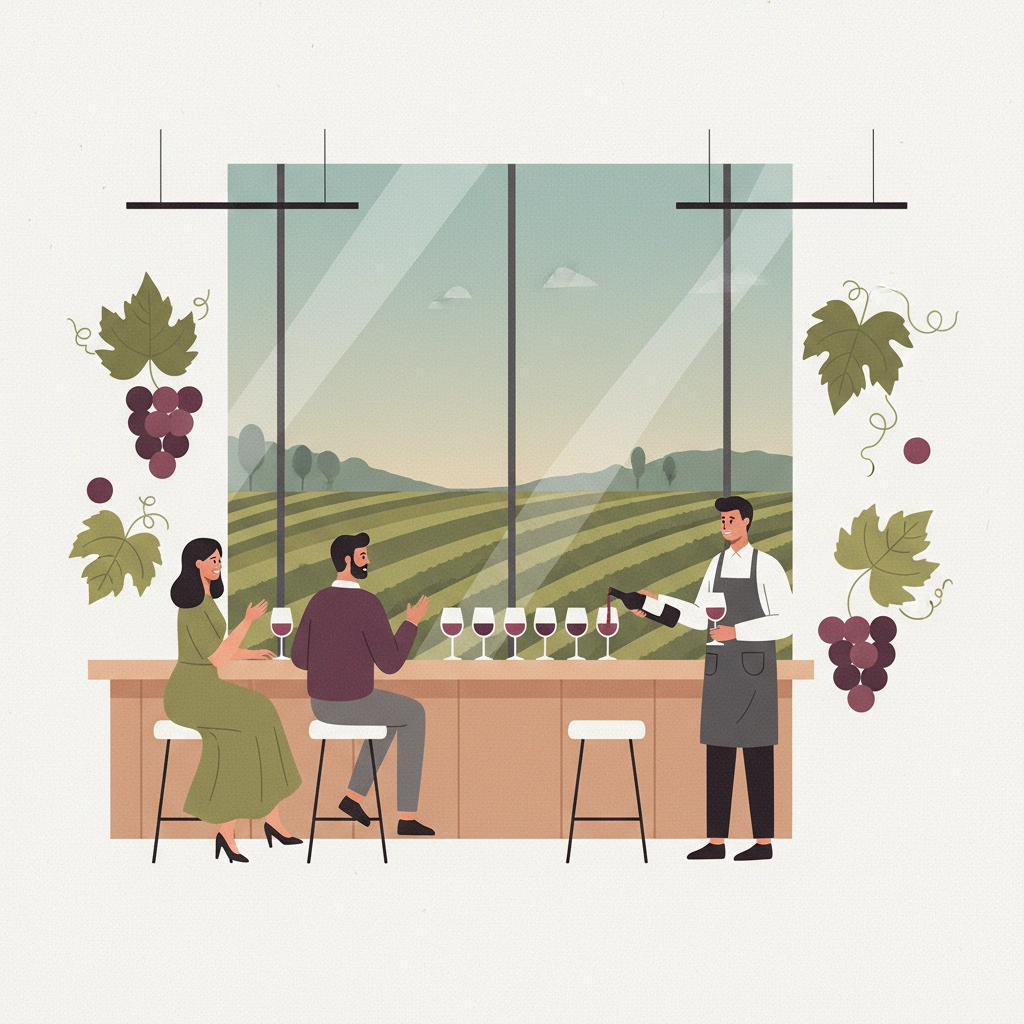
Food Pairings and Dining Options
Virginia wineries have elevated their food game significantly. Many offer lunch options ranging from artisanal charcuterie boards featuring local cheeses and meats to full Mediterranean meals from wood-fired brick ovens. The farm-to-table movement thrives here, with wineries sourcing ingredients from local farms and creating seasonal menus that complement their wines perfectly.
Consider timing your tour around meal service at one of your stops. Pairing great wine with great food enhances both experiences, and you'll understand why certain wines work with specific flavors. Some wineries also offer cooking classes or chef demonstrations that combine culinary education with wine tasting.
Choosing the Right Tour Experience
Professional tour operators distinguish themselves through expertise, safety, and convenience. Look for companies offering certified wine guides who provide education throughout your journey. Premium experiences should include comfortable transportation, knowledgeable commentary, and established relationships with winery partners.
Vineyard Voyages offers comprehensive tour experiences that handle all the logistics while you focus on enjoying yourself. Professional operators craft routes showcasing breathtaking views, award-winning wines, and unforgettable experiences while ensuring safe transportation between locations.
Essential Tips for First-Time Visitors
Pace Yourself – Wine touring isn't a race. Sip, savor, and take notes about wines you particularly enjoy. Most wineries are happy to provide tasting notes or recommendations for similar wines to try.
Ask Questions – Virginia winemakers and staff love sharing their knowledge. Ask about the vineyard's history, specific grape varieties, winemaking techniques, or food pairing suggestions. These conversations often lead to the most memorable parts of your visit.
Stay Hydrated – Drink plenty of water between tastings, especially during warm weather. Eating something before and during your tour helps you better appreciate the wines and prevents overindulgence.
Take Notes – With multiple tastings, it's easy to forget which wines you loved. Most tasting rooms provide cards or journals, or use your phone to note favorites for future purchase.
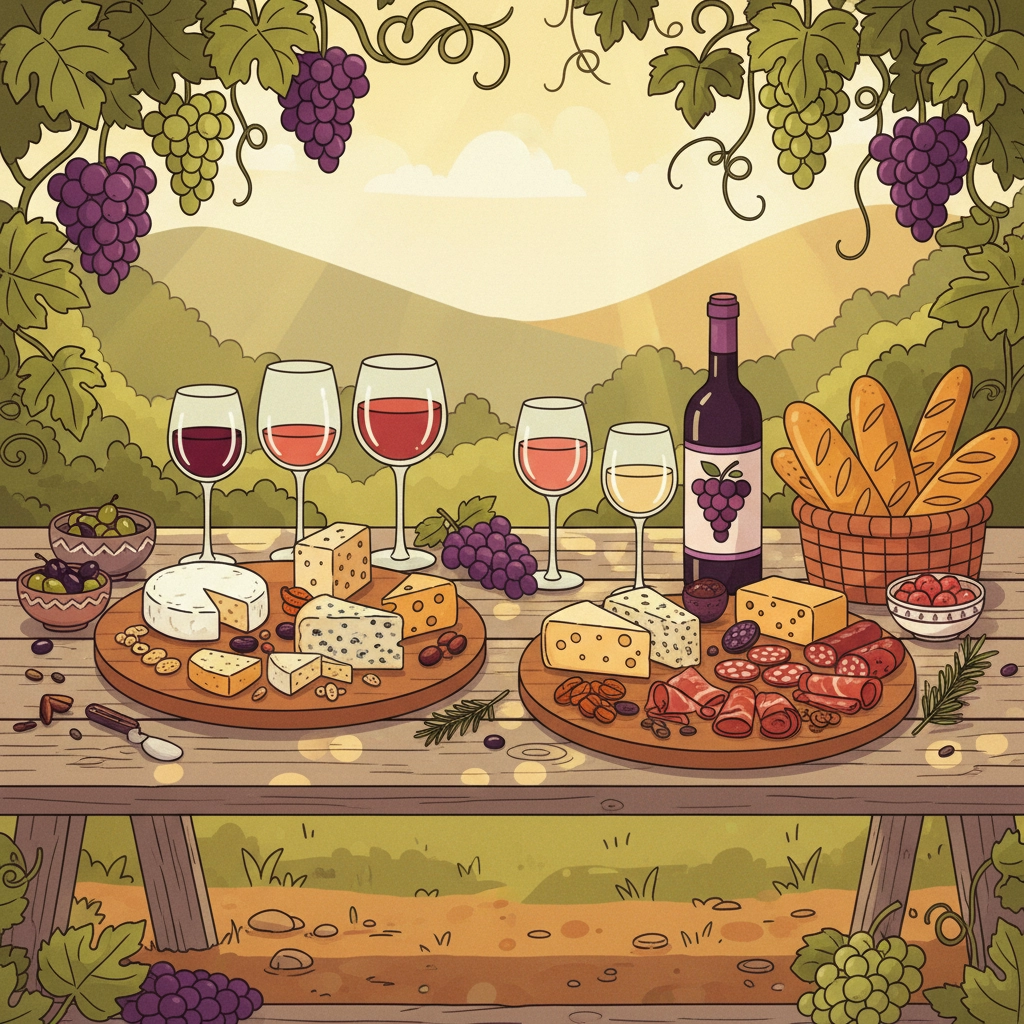
Making the Most of Your Investment
Wine touring represents excellent value compared to similar experiences in more famous wine regions. Virginia's prices remain reasonable while offering comparable quality and much more personal attention from staff and winemakers.
Consider joining wine clubs at wineries you particularly enjoy. Many offer member benefits like complimentary tastings, special event invitations, and discounts on purchases. For frequent visitors, these memberships often pay for themselves quickly.
Transportation Considerations are crucial for both safety and enjoyment. Professional tour companies eliminate the stress of navigation and designated driver responsibilities, allowing everyone in your group to fully participate in tastings. This investment in safety and convenience often proves worthwhile for the enhanced experience alone.
Beyond the Tasting Room
Virginia wine country offers activities beyond wine tasting. Many properties feature beautiful grounds perfect for photographs, hiking trails, outdoor games, and seasonal events like harvest festivals or summer concert series. Some wineries host weddings, corporate retreats, and private celebrations in their scenic settings.
Consider extending your wine country adventure into a weekend getaway. The region offers charming bed-and-breakfasts, luxury resorts, and vacation rentals that let you fully immerse yourself in wine country life.
Your first Virginia wine tour opens the door to an ongoing adventure. With over 300 wineries and new ones opening regularly, you'll always have new discoveries waiting. Start with a well-planned first visit, and you'll likely find yourself returning to explore different regions, seasons, and special events throughout the year.
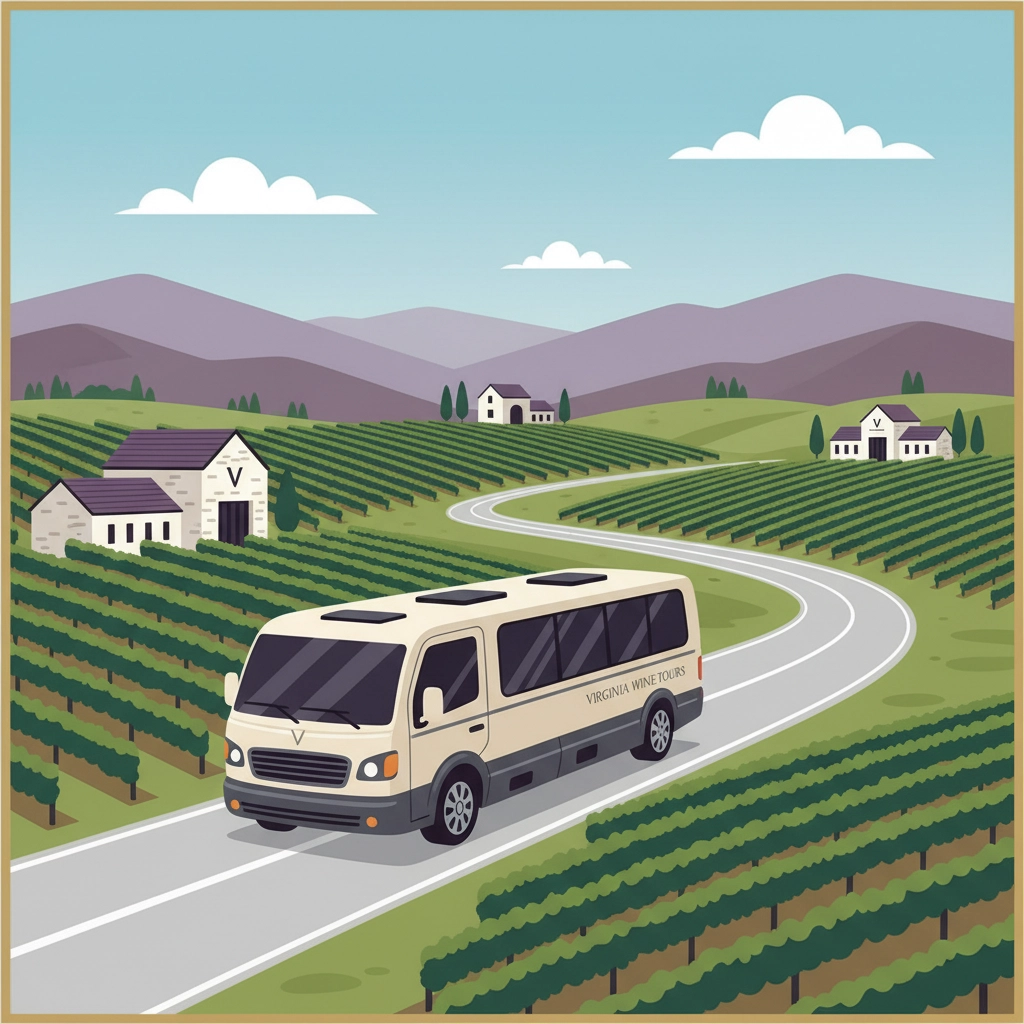
The beauty of Virginia wine country lies not just in the excellent wines, but in the authentic, welcoming atmosphere that makes every visitor feel like they've discovered something special. Your first wine tour adventure awaits – and it's closer than you might think.

